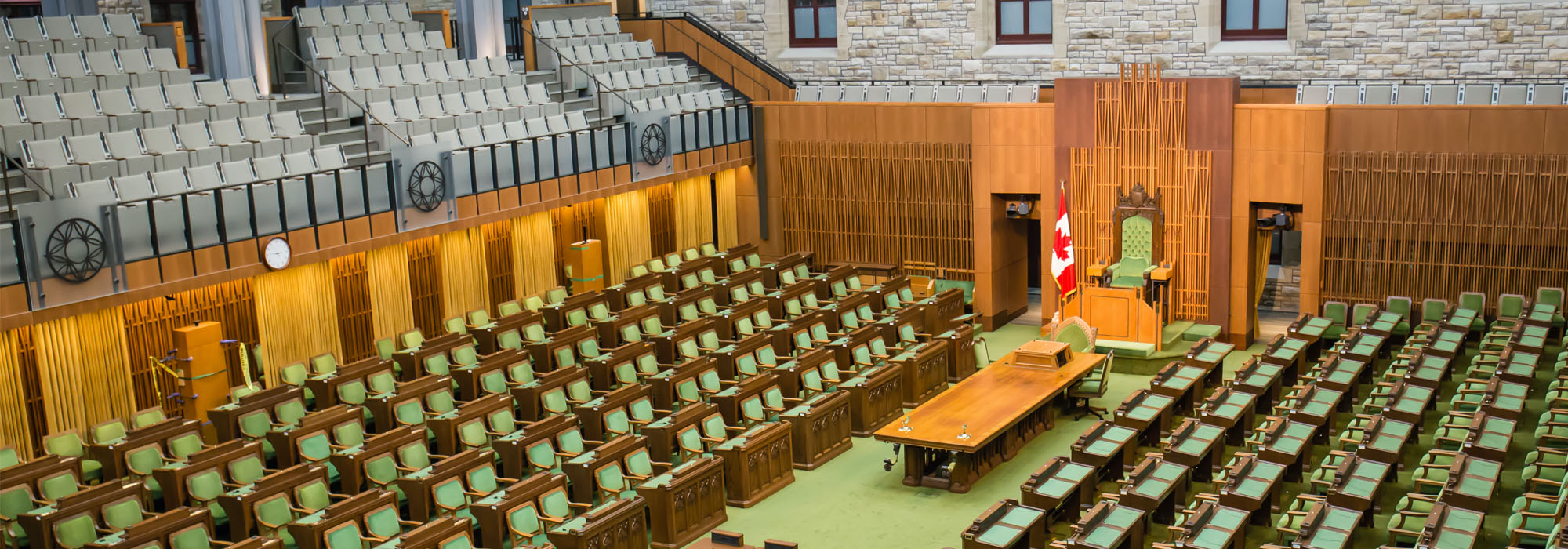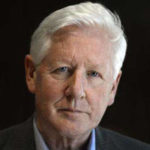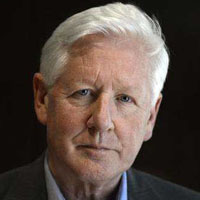
There are few phrases more apt to create a chill than “hung Parliament.” It implies confusion, delay, obstruction and a general dither that no one is really in charge and “nothing gets done.” But the reality in Canada and elsewhere is that Parliaments where no one party controls a majority can actually be productive and effective. That they can also be ineffective and divisive says more about the lack of creativity and goodwill among the participants than about the Parliaments themselves.
Canada’s two-party system effectively came to an end at the end of the First World War, when Liberals and Conservatives were unable to stop the emergence of farm and labour parties that represented Canadians who felt ignored by the elites of the day. After that point, minority Parliaments were elected in 1921, 1925, 1926, 1945, 1957, 1962, 1963, 1965, 1972, 1979, 2004, 2006, 2008, and now 2019. Many provincial elections in the federation have also produced minority governments, and some have been stable and productive. In the last half-century, Ontario elected minority Parliaments in 1975, 1977, 1985 and again in 2011.
Few of these experiences have been marked by the formation of a true coalition government – the only example of this at the federal level was the Unionist coalition formed by Conservative Sir Robert Borden during the First World War, designed to bolster cross-party support for conscription. The Liberal Party was split when its leader, Sir Wilfrid Laurier, decided he could not join Borden, but a number of his party members did.
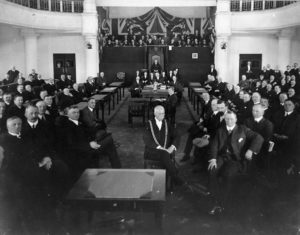
Hand-wringing over a potential coalition marked the last 10 days of this most recent campaign. NDP leader Jagmeet Singh and Green Party leader Elizabeth May mused about their conditions for joining such a government. The Conservatives then spent the rest of the campaign arguing about the need for a Conservative majority to counter the possibility of a coalition that would raise taxes, spend money foolishly and destroy the national economy.
This careless squabbling happens in elections, but it’s time to abandon the rhetoric around coalitions. Canada has elected a minority Parliament, with the Liberals winning the most seats but also losing them, and the Conservatives winning more seats but unable to make the argument that the Liberals should not be allowed to form a government. The Bloc Québécois came third, with more seats than expected, and the NDP fourth, with fewer seats than before. Still, the New Democrats won enough seats across the country to assure them of official party status and to make their support necessary to the Liberals to pass certain pieces of legislation.
I was part of the federal NDP caucus in the 1979 minority Parliament, and was struck by then-Progressive Conservative prime minister Joe Clark’s statement in his opening press conference that although a few seats short of a majority, he would “govern as if we have a majority.” This is sort of like saying you’ll jump out of a plane “as if I have a parachute.” If you don’t have the majority, it makes for a bumpy landing. Clark’s government was short-lived – the Liberals and NDP defeated the Conservatives on their first budget.
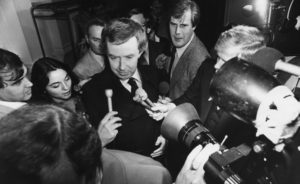
It was this personal experience, as well as many conversations I had about the 1972-74 Trudeau minority, that led me to propose a different approach in 1985 to then-Ontario Liberal leader David Peterson in our discussions about how to move forward after the election that year. I felt then that it was important to bring the 42-year-old Conservative reign to an end. I also wanted to ensure that a progressive agenda, supported in a steady way by both parties, would in fact happen. The alternative was a daily game of roulette with no assurance of a positive result.
Peterson had won fewer seats than Progressive Conservative leader Frank Miller, but the NDP had enough seats and political support to hold the balance of power. The Conservatives argued that a “gang-up” was illegitimate, but most constitutional scholars, and the general public, disagreed. After a negotiation that lasted a few weeks, the Liberals and the NDP signed an “accord” that ensured that in exchange for a commitment to carry out an agreed-upon agenda, the NDP would vote supply and confidence for two years, keeping the right to defeat specific legislation. It was not a formal coalition, where the NDP would take seats, but it was a more stable way of ensuring gains for both partners.

The accord was the product of a particular time, place, and arithmetic. It produced a remarkable agenda that included pay equity, expanded social housing, environmental legislation and ended extra billing. While it’s true David Peterson won a massive majority in 1987, the NDP became the Official Opposition and then the government in 1990.
The accord found some resonance in Saskatchewan in 1999 under then-NDP premier Roy Romanow, and more recently in BC for NDP Premier John Horgan and the Green Party.
The opposition coalition discussions in November 2008 following the minority Conservative government’s Fall Economic Statement also drew heavily on the accord experience in Ontario. The agreement featured then-Liberal leader Stéphane Dion and then-NDP leader Jack Layton, with support from the Bloc Québécois. Those talks were brought to a close a few months later, when the next Liberal leader, Michael Ignatieff, agreed to support a revised Conservative budget.
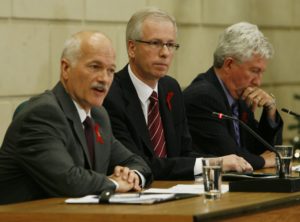
In May of 2011, then-prime minister Stephen Harper’s successful emergence from near defeat allowed him to steady the ship and led to a successful campaign for a “strong stable majority.” Harper did more than anyone to discredit the idea of successful understandings between competing minority parties in Parliament, insisting that the party that wins the plurality of seats gets to govern no matter what. For a time, it didn’t seem to matter that this was not the constitutional rule in parliamentary systems.
The circumstances facing the current federal Parliament are different – and no one should be surprised by Trudeau’s announcement in his first post-election press conference that he is planning on taking votes in Parliament one step at a time, listening and consulting with all parties but not looking to a formal arrangement with any of them. That is what Pierre Trudeau did in 1972 as did Lester Pearson in 1963 and 1965.
Paul Martin’s Liberal minority in 2004 produced some positive steps, such as the Kelowna Accord, a 10-year deal on health-care funding, and strong moves on overdue defence and foreign aid spending. It was ultimately defeated in a climate of mistrust around the sponsorship scandal and the ensuing Gomery inquiry, as well as due to internal disagreements and external wrangling with the NDP.
How stable this government will prove to be will depend on a large number of factors: the extent to which greater trust can be created between parties after a fractious election; the state of the economy (which could lead to shifts in public opinion); the readiness of different parties for an election in the event of a government defeat; and how well the government does in forging agreements with different parties for different purposes. The rhetoric and gamesmanship that might work in a majority Parliament can backfire badly in a different situation, and loose talk can sink the parliamentary ship faster than anyone realizes possible.
Strengthening personal relationships across party lines can help change the dynamic in a Parliament. So can the emergence of a strong agenda that crosses party lines and speaks to a broader public outside the House. Former prime minister Lester Pearson and NDP leader Tommy Douglas had a lot of respect for one another, as did David Lewis and Pierre Trudeau. Two House leaders, New Democrat Stanley Knowles and Liberal Allan MacEachen, knew each other well and developed a way of signaling what different moves might mean. In Ontario, the personal friendship between former PC premier Bill Davis and former NDP leader Stephen Lewis, and between a number of ministers and their critics, allowed for much more dialogue and sharing of perspectives than was ever known to a wider public. These intangibles matter.
So stable minorities are possible, but not inevitable, and one reality surrounds the parliamentary circus: there is no such thing as “strong minority.” One vote short, or 20, makes no difference. Success will require a strong and coherent agenda, a willingness to address the regional frictions in the country, an ability to listen, and then to execute effectively, and an equal willingness on the part of opposition parties to understand that they did not succeed in convincing the electorate that they should govern. A strong dose of humility all round is required.
Photo: Shutterstock/By WorldStock
Do you have something to say about the article you just read? Be part of the Policy Options discussion, and send in your own submission. Here is a link on how to do it. | Souhaitez-vous réagir à cet article ? Joignez-vous aux débats d’Options politiques et soumettez-nous votre texte en suivant ces directives.



